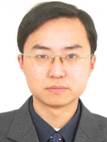Energy Efficiency Optimization of 5G Radio Frequency Chain Systems
Abstract:
With the massive multi-input multi-output (MIMO) antennas technology adopted for the fifth generation (5G) wireless communication systems, a large number of radio frequency (RF) chains have to be employed for RF circuits. However, a large number of RF chains not only increase the cost of RF circuits but also consume additional energy in 5G wireless communication systems. In this paper, we investigate energy and cost efficiency optimization solutions for 5G wireless communication systems with a large number of antennas and RF chains. An energy efficiency optimization problem is formulated for 5G wireless communication systems using massive MIMO antennas and millimeter wave technology. Considering the nonconcave feature of the objective function, a suboptimal iterative algorithm, i.e., the energy efficient hybrid precoding (EEHP) algorithm is developed for maximizing the energy efficiency of 5G wireless communication systems. To reduce the cost of RF circuits, the energy efficient hybrid precoding with the minimum number of RF chains (EEHP-MRFC) algorithm is also proposed. Moreover, the critical number of antennas searching (CNAS) and user equipment number optimization (UENO) algorithms are further developed to optimize the energy efficiency of 5G wireless communication systems by the number of transmit antennas and UEs. Compared with the maximum energy efficiency of conventional zero-forcing (ZF) precoding algorithm, numerical results indicate that the maximum energy efficiency of the proposed EEHP and EEHP-MRFC algorithms are improved by 220% and 171%, respectively.
 Xiaohu Ge received the Ph.D. degree in communication and information engineering from Huazhong University of Science and Technology (HUST), Wuhan, China, in 2003. He is currently a Full Professor with the School of Electronic Information and Communications, HUST. He is an Adjunct Professor with the Faculty of Engineering and Information Technology, The University of Technology Sydney (UTS), Sydney, N.S.W., Australia. He is the founding director of China International Joint Research Center of Green Communications and networking. He has authored more than 110 papers in refereed journals and conference proceedings and has been granted about 15 patents in China. His research interests include mobile communications, traffic modeling in wireless networks, green communications, and interference modeling in wireless communications. He is leading several projects funded by NSFC, China MOST, and industries. He is taking part in several international joint projects, such as the EU FP7-PEOPLE-IRSES: project acronym WiNDOW (grant no. 318992) and project acronym CROWN (grant no. 610524). Dr. Ge is an IET Fellow. He has been actively involved in organizing more the ten international conferences since 2005. He served as the General Chair for the 2015 IEEE International Conference on Green Computing and Communications (IEEE GreenCom). He serves as an Editor for the IEEE Transactions on Communications and Networking.
Xiaohu Ge received the Ph.D. degree in communication and information engineering from Huazhong University of Science and Technology (HUST), Wuhan, China, in 2003. He is currently a Full Professor with the School of Electronic Information and Communications, HUST. He is an Adjunct Professor with the Faculty of Engineering and Information Technology, The University of Technology Sydney (UTS), Sydney, N.S.W., Australia. He is the founding director of China International Joint Research Center of Green Communications and networking. He has authored more than 110 papers in refereed journals and conference proceedings and has been granted about 15 patents in China. His research interests include mobile communications, traffic modeling in wireless networks, green communications, and interference modeling in wireless communications. He is leading several projects funded by NSFC, China MOST, and industries. He is taking part in several international joint projects, such as the EU FP7-PEOPLE-IRSES: project acronym WiNDOW (grant no. 318992) and project acronym CROWN (grant no. 610524). Dr. Ge is an IET Fellow. He has been actively involved in organizing more the ten international conferences since 2005. He served as the General Chair for the 2015 IEEE International Conference on Green Computing and Communications (IEEE GreenCom). He serves as an Editor for the IEEE Transactions on Communications and Networking.

